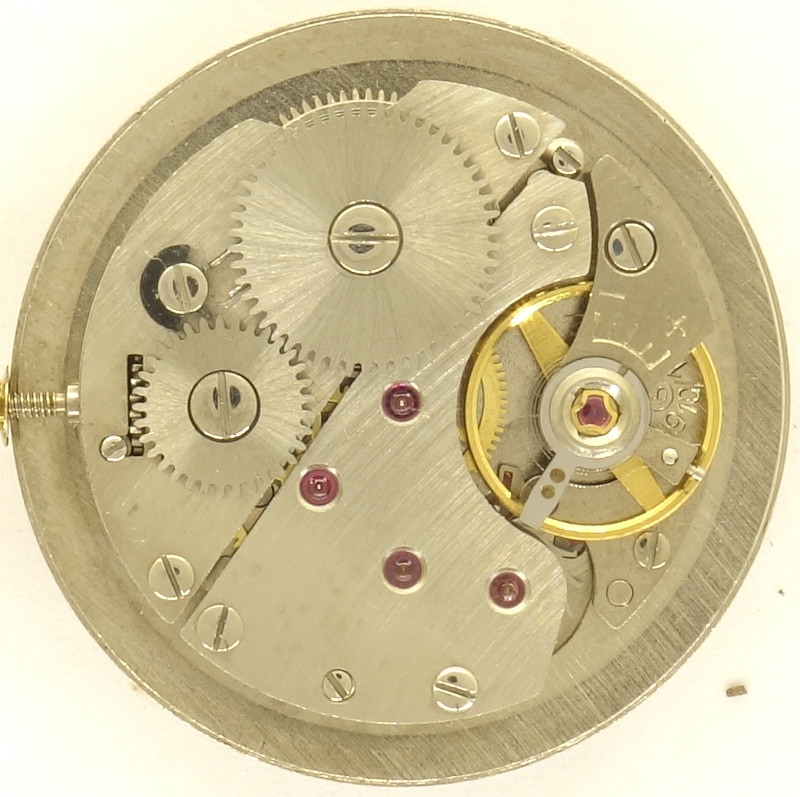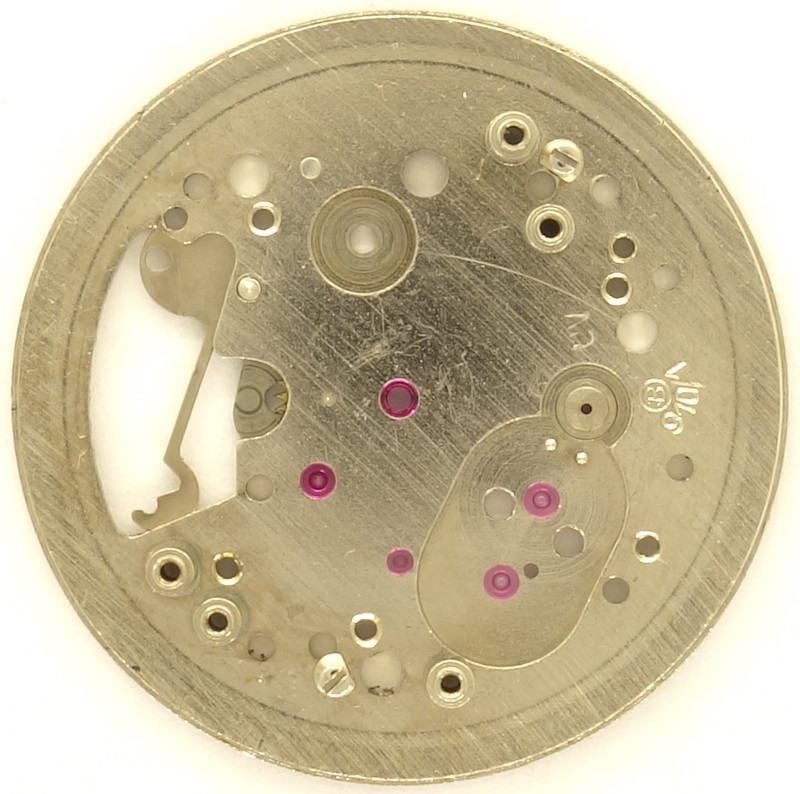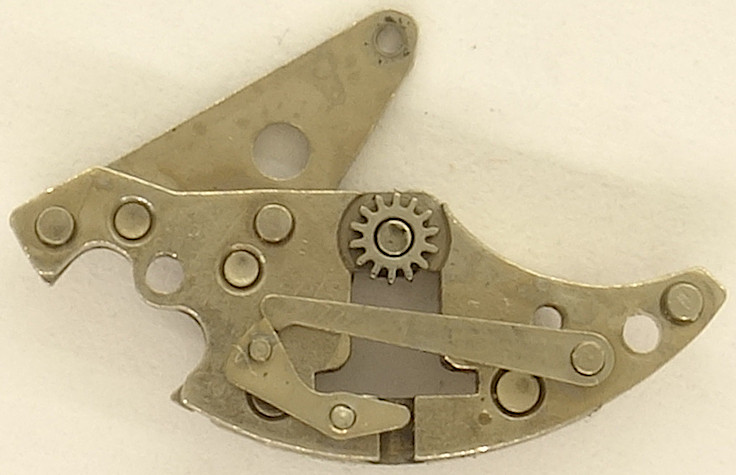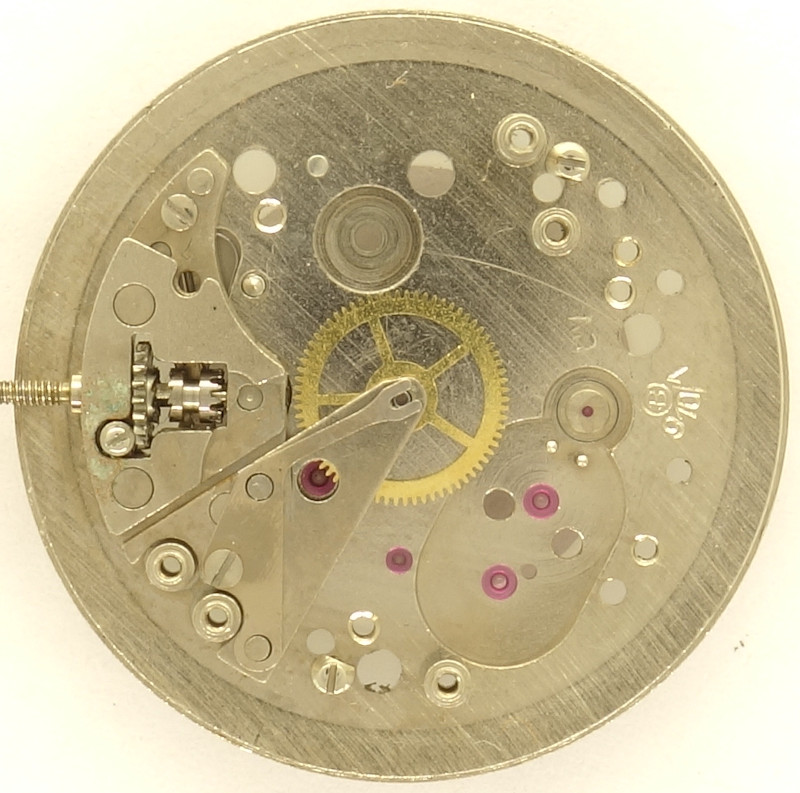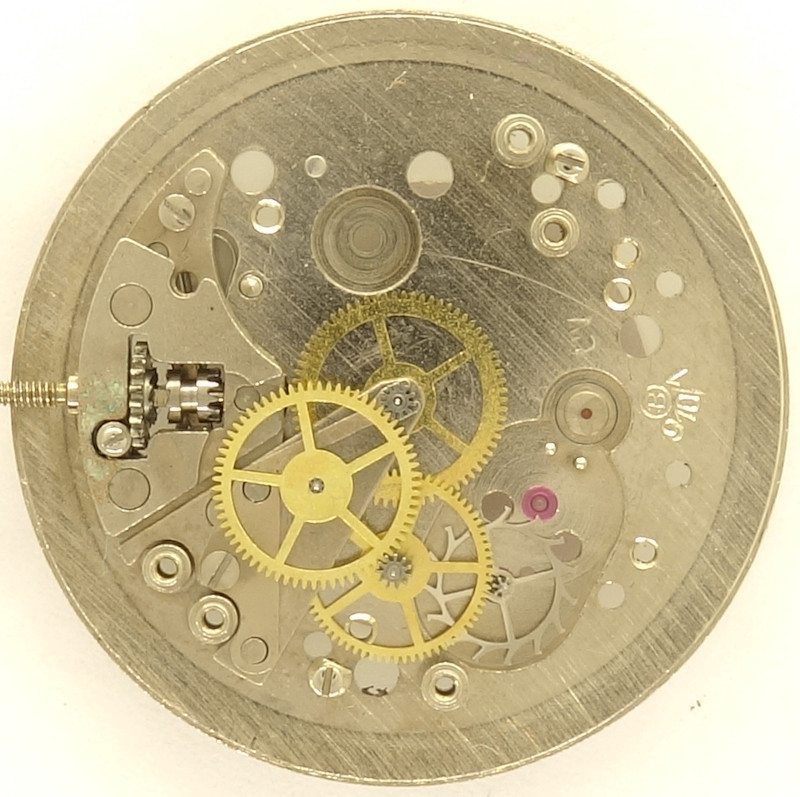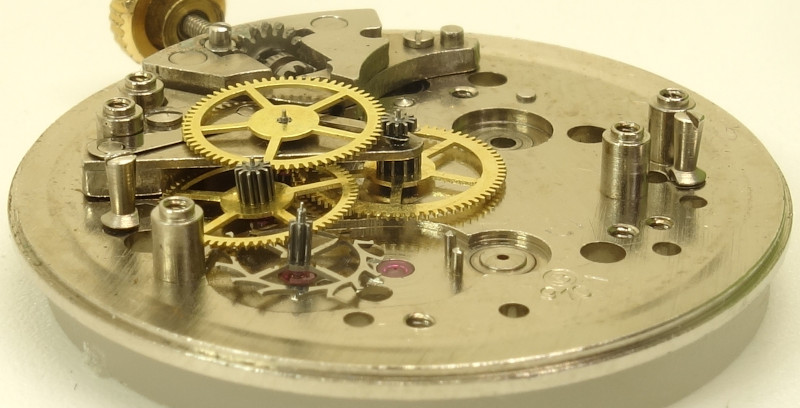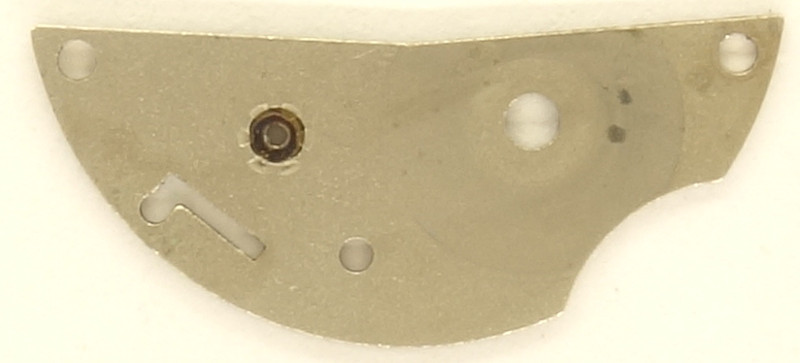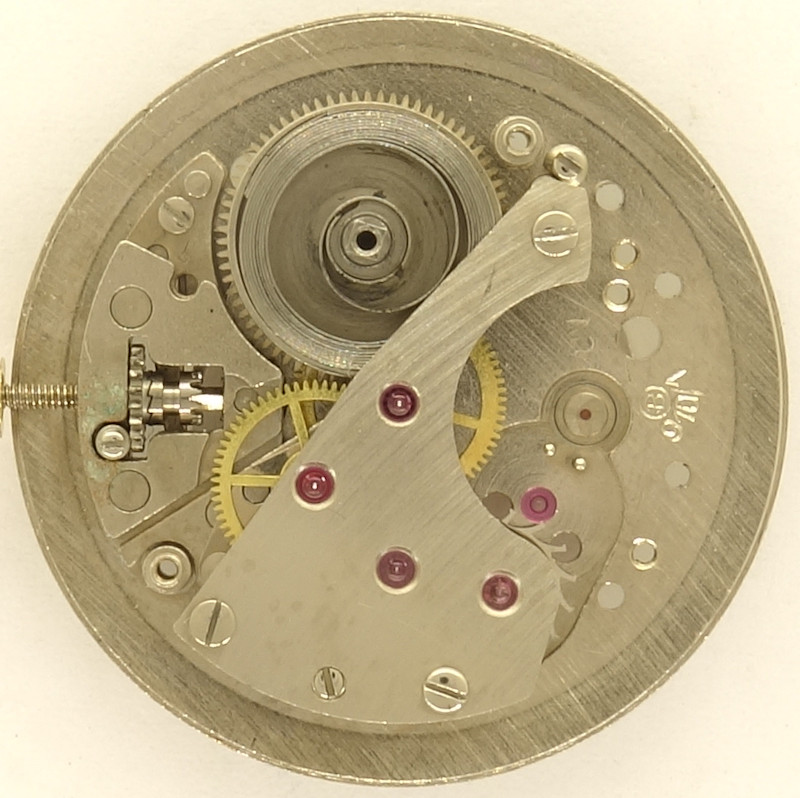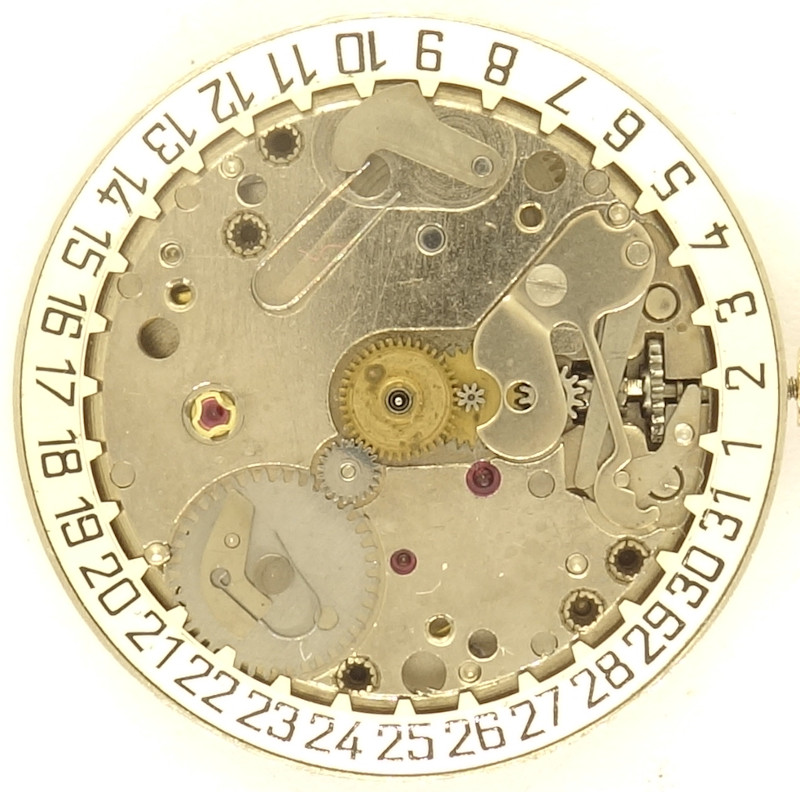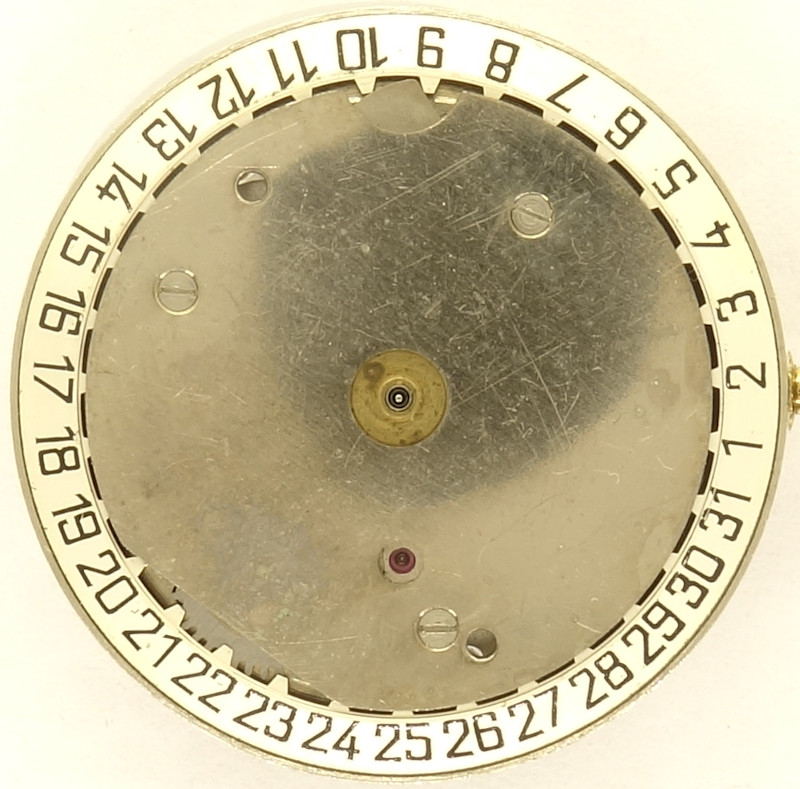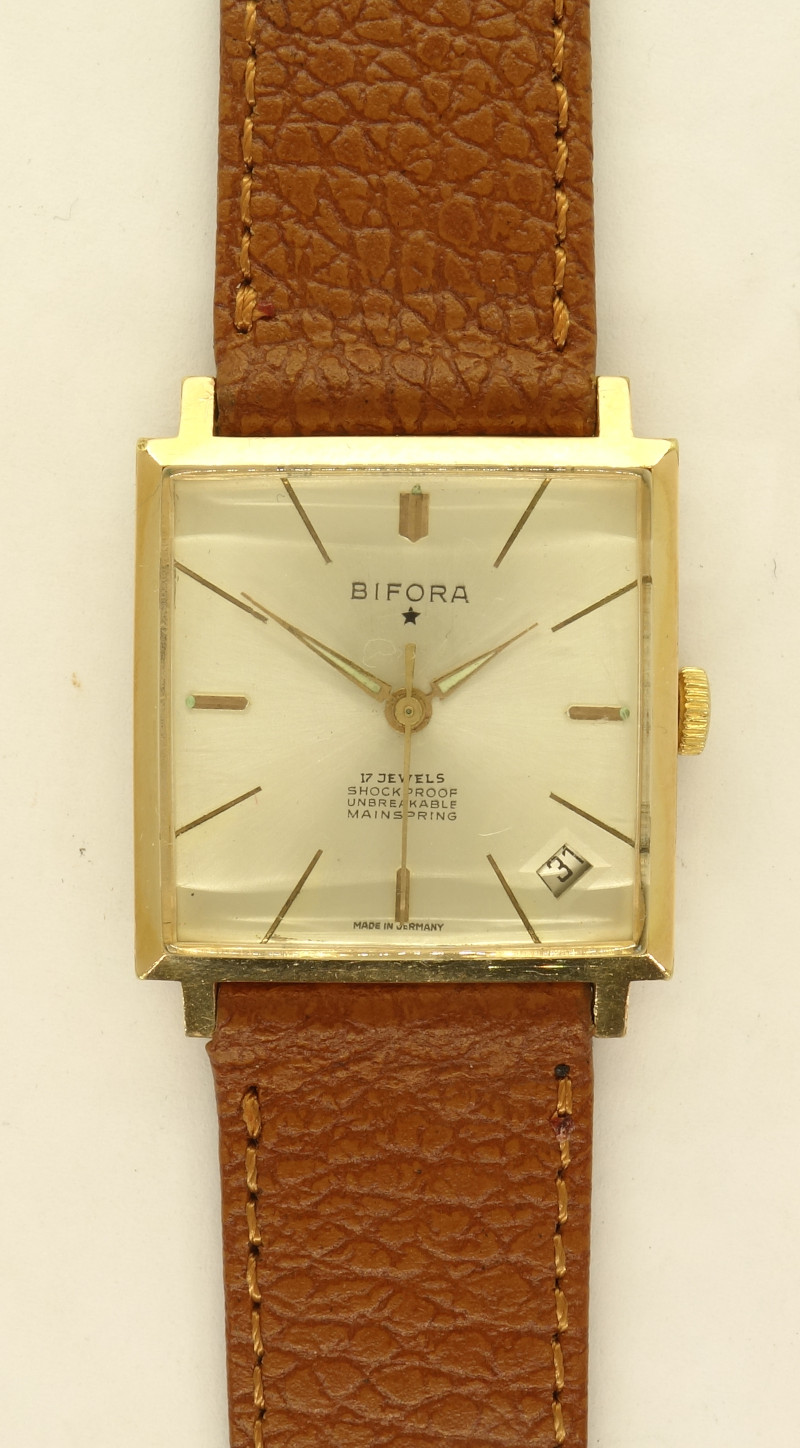Description
In 1962, Bifora launched the cost-optimized caliber series 91, which contained among other movement the Bifora 910/1 shown here. It has got an enlarged base plate, a larger mainspring barrel and a date indication.
Construction-wise, it is a pillar construction without decorative elements, but it was so reliable, that it was made until 1980.
All important bearings are contain rubies, even the one of the minute wheel.
You can clearly see, how the base plate was enlarged from 9 3/4 lignes before to 11 1/2 lignes, which is the standard size for a gents’ movement.
This movement has got the oddity, that the keyless works is mounted onto the minute wheel bridge, and not on the dial side.
On the minute wheel cock, there’s also a spring, which saved the center seconds indication from fluttering by applying a little bit of friction onto its pinion.
We have the classical gear train with directly driven center minute wheel, third wheel, seconds wheel at 6 o’clock and the filigree steel escape wheel.
The center seconds pinion has got the same amount of teeth as the pinion of the seconds wheel and it is also driven by the outer gear of the third wheel.
For cost-saving, a pillar construction was used. It is much simpler in construction, since it uses only a flat base plate, where not much material had to be taken off. The disadvantage is the lower precision, which could result in a lesser precision of the rates.
The Bifora 910/1 uses a golden toned, two-leg anular balance, which is beared in two inhouse Bishock shock protections. It regulates a swiss pallet lever escapement and beats with 18000 A/h, which can be adjusted at the hairspring key only.
The ratchet wheel axle bearing is riveted onto the flat barrel bridge.
The mainspring barrel is open on one side. Not really nice, but pretty standard for a pillar movement.
The rather complex calendar mechanism uses a number of springs, which love to fly away.
Very delicate is the switching wheel at position 7 o’clock, whose switching finger is moveable and supported with a spring. It allows a semi-fast correction by turning the hands back and forth.
The Bifora 910/1 has got a yoke winding system, a detail, which is not often to find on a pillar movement, because usually, these movements only use the much simpler rocking bar winding systems.
Of course, the calendar mechanism is covered. At position 6 o’clock, you see the hole, through with with a prolonged axle, a decentral seconds indication could be realized.
In the lab
Timegrapher result
On this speciman, you can clearly see the need for a real revision after many years of use:| horizontal positions | |||
|---|---|---|---|
| dial up | +13 s/d | 211° | 0.6ms |
| dial down | 1 s/d | 203° | 0.1ms |
| vertical positions | |||
| crown right (12 up) | -30 s/d | 169° | 0.3ms |
| crown up (3 up) | -40 s/d | 169° | 0.1ms |
| crown left (6 up) | -54 s/d | 173° | 0.8ms |
| crown down (9 up) | -24 s/d | 176° | 1.0ms |
Technical data
| Manufacturer: | Bifora |
| Caliber: | 910/1 |
| Caliber base: | Bifora 91 |
| Size: | 11 1/2''' (measured: 25,54mm) |
| A/h: | 18000 |
| Number of jewels: | 17 |
| Escapement: | Pallet lever |
| Balance types: | Nickel anular balance (two legs) |
| Shock protection(s): | Bidlingmaier (Bifora) |
| Balance bearing / direction hairspring: | Clockwise |
| Moveable stud: | yes |
| Adjust mechanism: | Hairspring key |
| Construction: |
|
| Construction type: | pillar construction |
| Winding mechanism: | yoke winding system |
| Setting lever spring: | 3 hole(s) |
| Features: |
|
| Production period: | 1962 - 1980 |
| References: | Flume: K3 46 |
| Mentioning in literature (years): | 1964 |
| Production years: | 1962-1980 |
| Inventory number: | 22024 |
